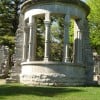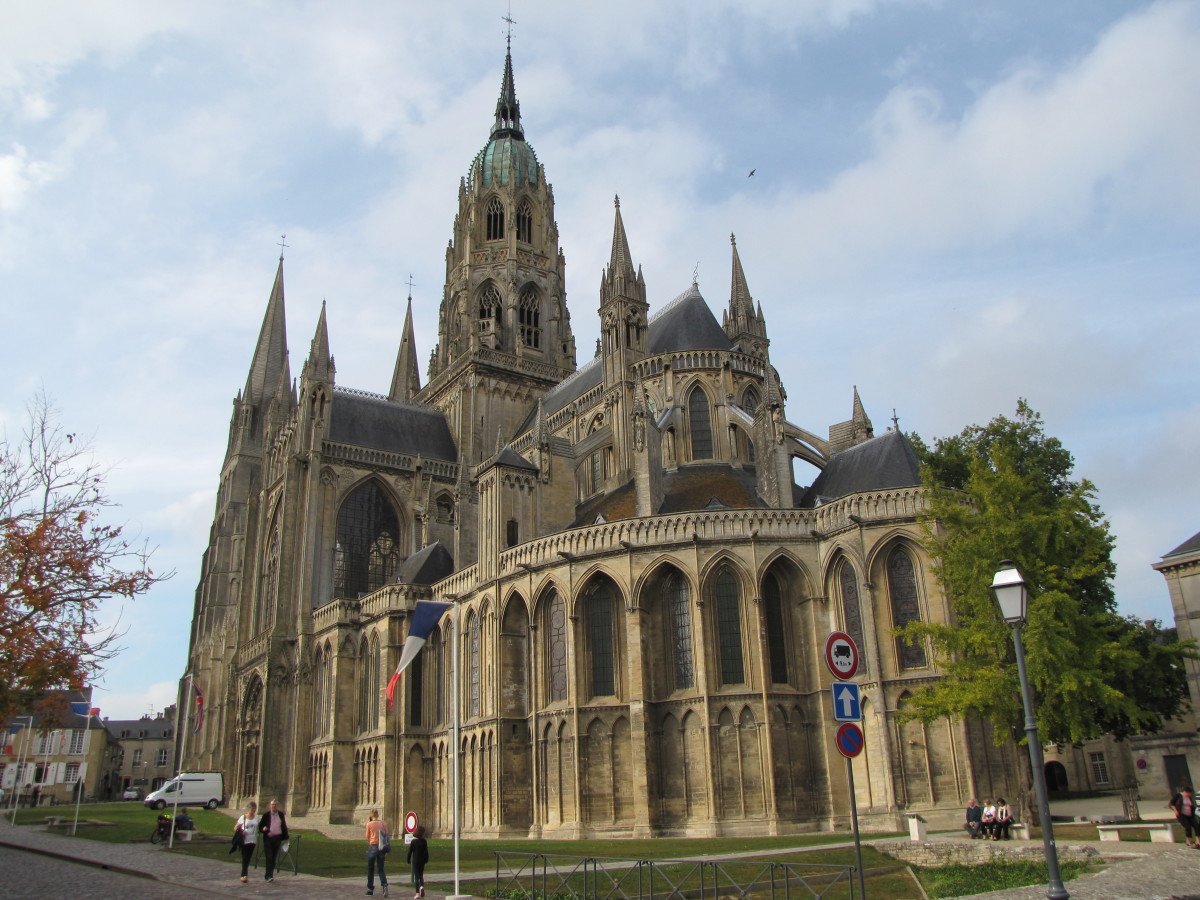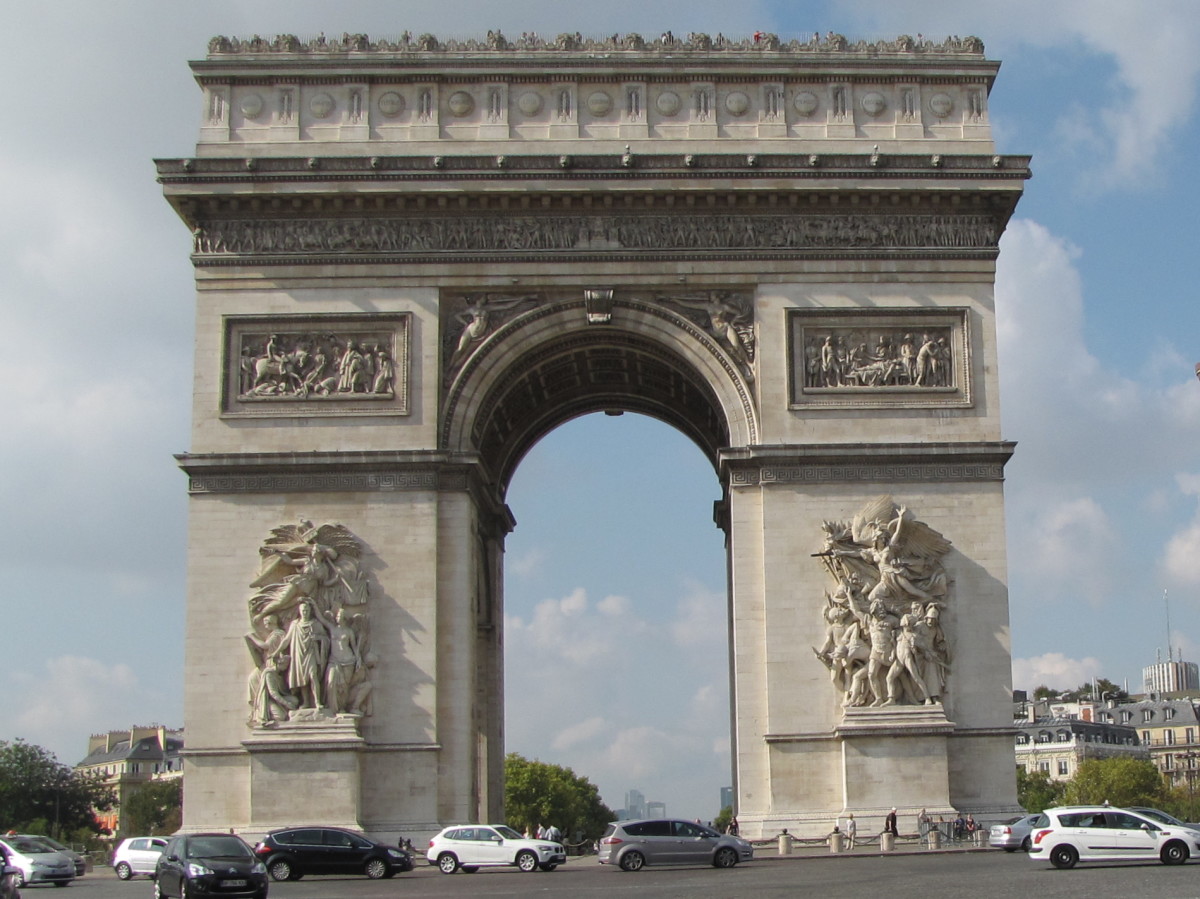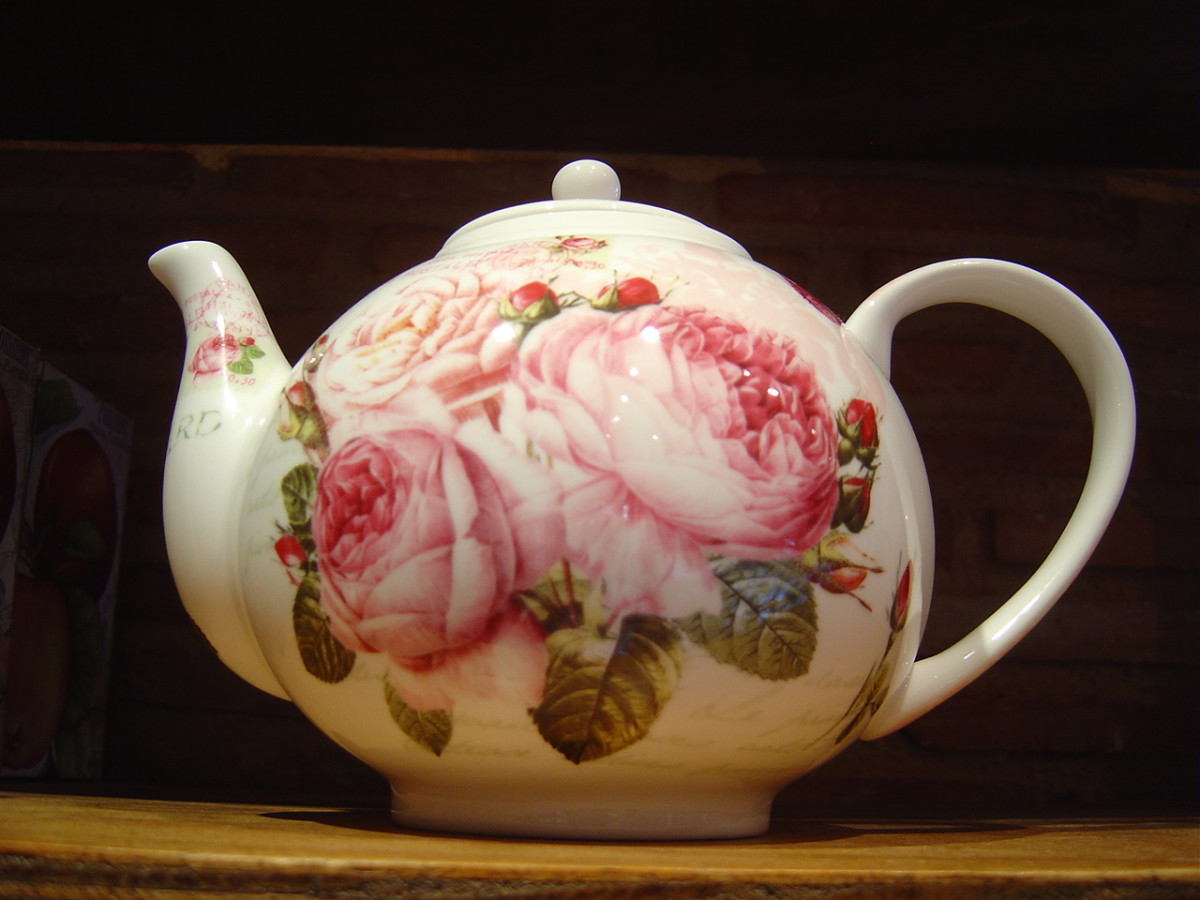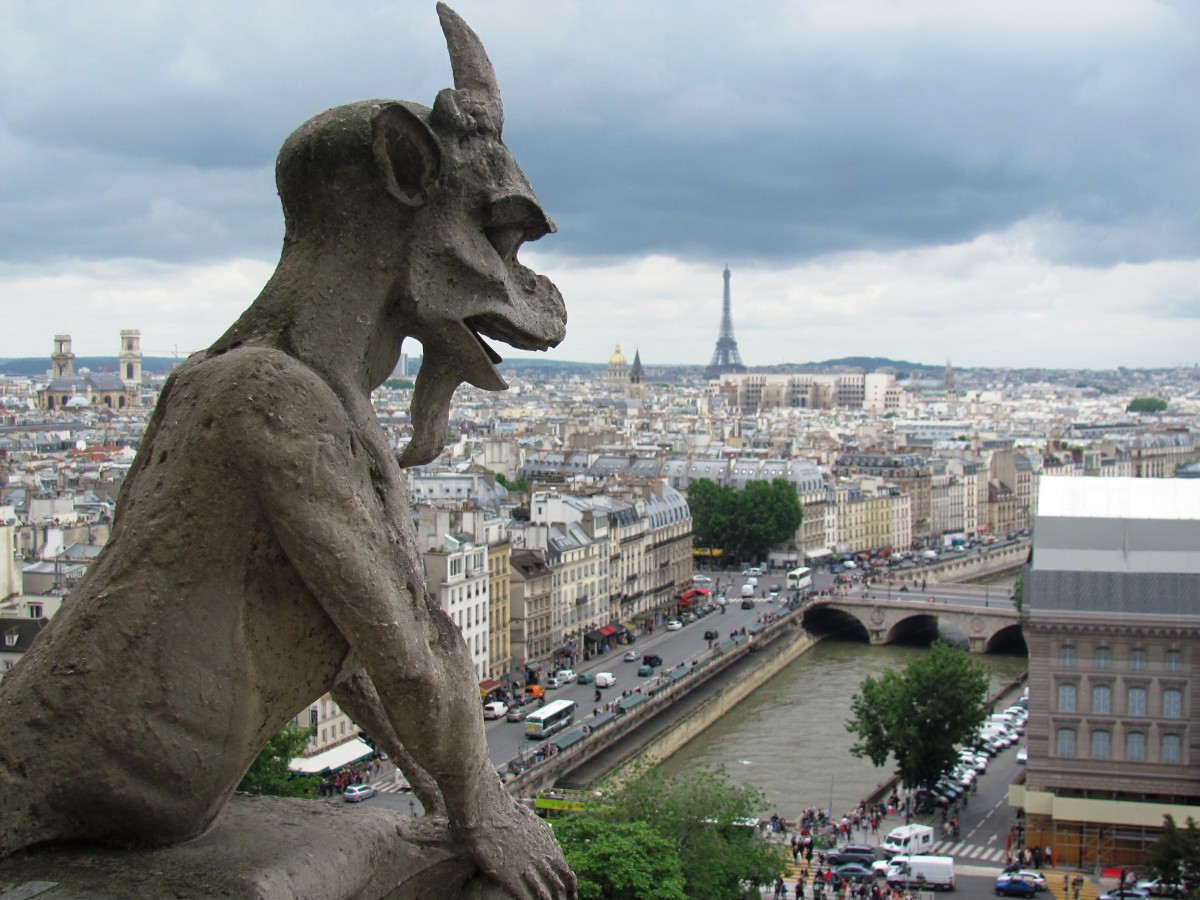Visiting the Station at Cahors, France: elegant frontage on place Jouinot, completed 1884
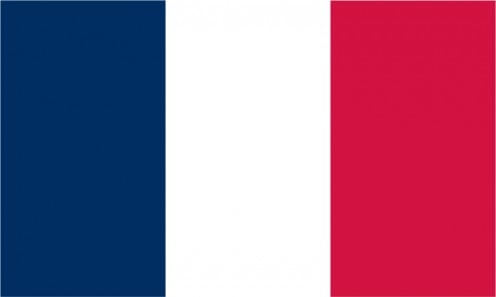
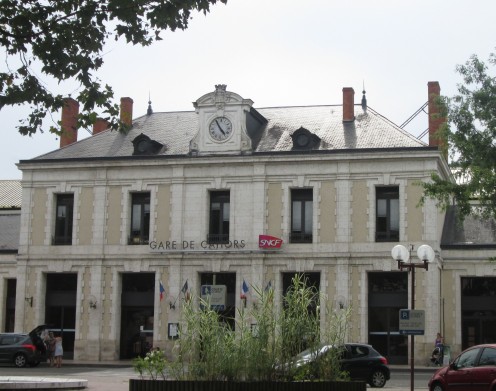
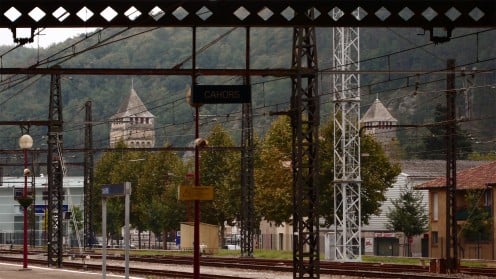
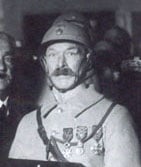
Elegance from a 19th century rail expansion
Commenced in 1883 and completed in 1884, the present building of the railroad station at Cahors, France is situated at 66, place Jouinot (1).
Among the features of this building are a neo-Classical frontage in a simple, French Renaissance style. Particularly conspicuous is a large clock with a Baroque-style pediment: this feature (2) appears to be a broken pediment but actually — on closer inspection — is a fairly standard pediment with added ornamentation.
From the platforms at Cahors station, the well-known Medieval landmark the Pont Vanentré is close by and clearly visible (see photo).
The Third French Republic was a period of great expansion in France's railroad network, and in a sense this fine station building is not untypical of many such edifices dating from the period.
While as most stations along the French rail network (3) Cahors' station is operated by SNCF (Société des chemins de fer français), when opened, the station and company were in private hands, with the line linking Orléans and Montauban. The town's addition to France's greatly expanding rail network thus rendered this chief town of Lot considerably less isolated in a department characterized by sometimes dramatic, rocky topography.
Cahors is situated in France's Lot department, in the Languedoc-Roussillon-Midi-Pyrénées region.
August 17, 2016
Notes
(1) Interestingly, a nephew of the Republican leader Léon Gambetta (1838-1882) was the well decorated French army General François Léon Gambetta-Jouinot (1870-1923). The Square is also sometimes known by the simple designation place de la Gare.
(2) Such a feature recalls Baroque pediments on church buildings identified with the Counter-Reformation period.
(3) There are still some private French train operators, even though the great majority of the network is controlled by the SNCF.
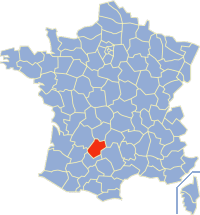
Also worth seeing
In Cahors itself, which for its size has a remarkable amount of architectural heritage and Medieval history, landmarks include Medieval structures such as the Pont Valentré and the Cathedral; a statue of Gambetta, a native of the town, was unveiled not long after the statesman's death. (See also Note 1, above.)
Saint-Cirque-Lapopie (distance: 26 kilometres) is an ancient, cliff village reputedly occupied since Gallo-Roman times.
Montauban (distance: 61 kilometres) is an historic town on the Tarn River , with remarkable architecture, including the Ingres museum and the arcades of the place Nationale .
...
How to get there: United Airlines flies from New York Newark to Paris (Aéroport Paris-Charles de Gaulle ), where car rental is available. (Paris-Cahors distance: 576 kilometres). The French railroad company SNCF maintains services from Paris to Cahors. You are advised to check with the airline or your travel agent for up to date information.
MJFenn is an independent travel writer based in Ontario, Canada.
Other of my hubpages may also be of interest
- Visiting Cahors, France: architectural gem from the Middle Ages
Step into the city of Cahors in the French department of Lot, and it is like a step back into the Middle Ages. The Valentré bridge has linked the two banks of the Lot River since the 14th century. It is probably Cahors's most famous landmark. (I... - Visiting Montauban, France: the weight of history and architectural distinction
The picturesque and historic city of Montauban has much to offer the visitor. Situated as it is in the Tarn-et-Garonne department of southern France, this very name offers a clue as to one of the principal features of the city: the Tarn River ... - Visiting the Longchamp Palace, Marseille, France: 19th century grandeur, with fine gardens
Regarding the name of this fine structure in Marseille (sometimes written in English 'Marseilles'), the visitor may exclaim: Oh, I've heard of Longchamp! Well, this may indeed be so, but the Longchamp Palace (French: Palais Longchamp ) is not to be.. - Visiting the Gare du Nord, Paris, France: Beaux-Arts Neoclassicism by Jacques Ignace Hittorff, 1864
Flag of France FlagPictures.org Gare du Nord, and a Metropolitain access, Paris 'User:Jorgeroyan', Creative Commons A-SA 3.0, wikimedia.org Particularly under civic planner Baron Haussman, the 1860s were a decade of Napoleon III's Second Empire that. - Visiting the Paris Opera, France: amazingly opulent architecture
The Paris Opera (Opéra de Paris) seems quite simply to be made for an illustrated dictionary's definition of opulence, in an architectural sense. The work, in Neo-Baroque style, of distinguished architect Charles Garnier (1825-1898), it was...
